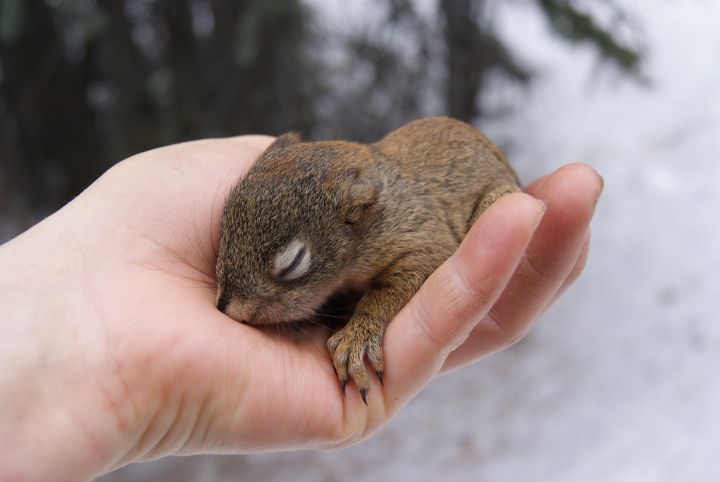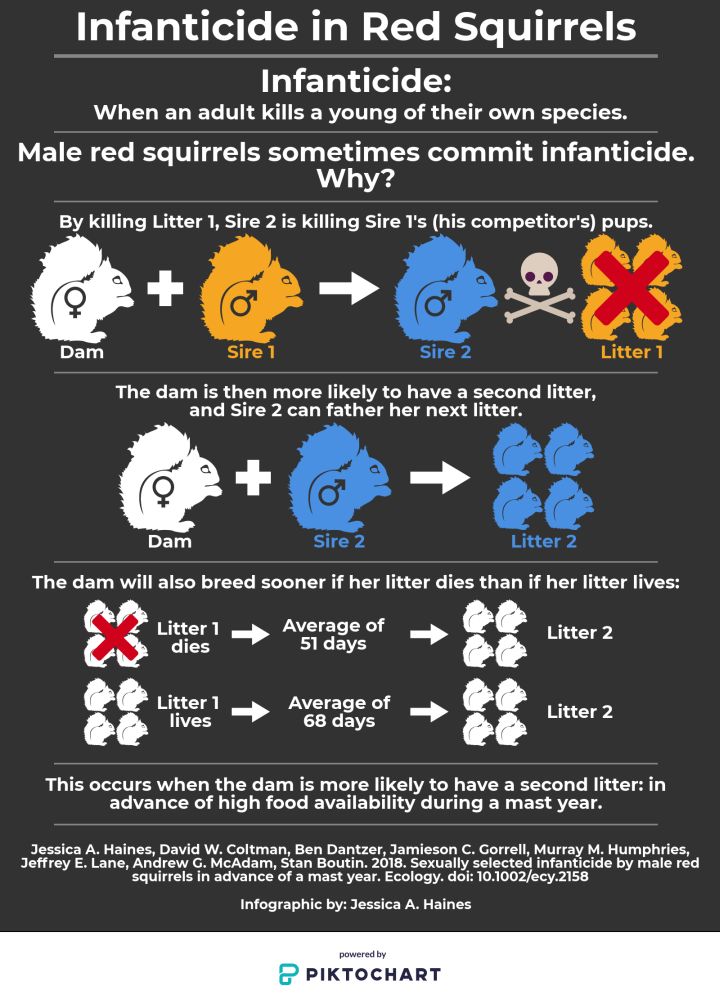Red squirrels are likely to commit what’s called “sexually selected infanticide” in years when food is abundant, according to new research out of the University of Alberta.

The activity sees male squirrels kill the young of rival males in hopes of bettering their chance to reproduce when the female breeds again, according to the leader of the study.
“This is something that’s been observed in lots of different animal species. This is the first time it’s been documented in red squirrels,” Jessica Haines said.
According to Haines, it happens during what’s known as a “mast year,” when spruce trees produce large amounts of spruce cones than in regular years. The occurrence of these years are irregular, but happen every four to seven years.
“The females will produce multiple litters in these years,” Haines explained. “And these are the years when I saw a male commit infanticide and where I saw evidence that it might be a behaviour that males use.”
Haines, a postdoctoral fellow at the U of A, was working with red squirrels in the Yukon in 2014 when she made the discovery. She was out doing field work when she heard a commotion between a male and a female red squirrel in a nearby tree.
- Alberta farmers vow to keep up the fight against proposed motorsports park
- Drumheller hoping to break record for ‘largest gathering of people dressed as dinosaurs’
- Valleyview RCMP investigate nude video taken in rec center washroom
- Oilers coach calls McDavid and Draisaitl’s playoff performances remarkable
“I knew that it was the territory of the female and that the male was intruding on her territory,” Haines explained.
“As I watched, I saw the male approach one of her young pups, which was in the tree, and he killed it.”
Further research led Haines to find another pup in the same litter had been killed. Using genetic techniques, she discovered the male squirrel who killed the pup was not the pup’s father. He was the father of the pups in the mother’s second litter.
“The male is not only reducing the success of his rivals, he’s also giving himself a second chance at fatherhood,” Haines explained.
What’s surprising about this discovery, Haines said, is that sexually selected infanticide is typically more common among species that live in groups, or one male has a harem of females. Lions are one example.
“They live in these prides and when a male lion comes in and takes over the pride, he will typically come in and kill all of the young offspring that were sired by the previous male who lived in that group.”
READ MORE: Squirrel glamping? Critter caught stealing toilet paper from Alberta campground
Red squirrels, on the other hand, live alone in separate territories and do not mate with a single female during breeding season.
“Although the infanticide has mainly been shown in these social species, or group living species… there are examples — and red squirrels are one — where we actually see it happening in other species,” Haines said.
“It tells us that these males can actually have a flexible mating behaviour because they mainly show this behaviour in a mast year, as far as we can tell.
Haines said the red squirrel population isn’t affected by this behaviour because females have more pups in mast years when the infanticide happens.
Haines said this discovery tells her there’s much more to lean about infanticide in different species.




Comments